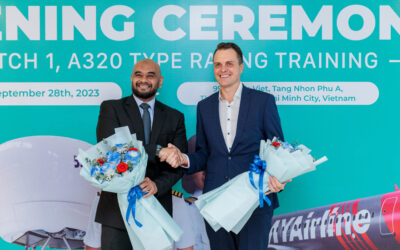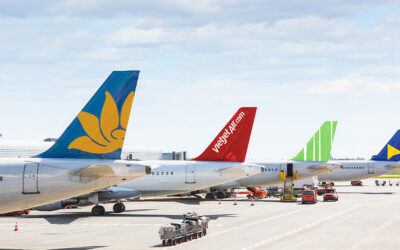The original Airbus A320 first entered service in 1988 with the launch customer Air France. Almost 30 years later, in 2016, a newer variant, A320neo, started its operations, with Lufthansa becoming the first client. But what is essentially different between the two aircraft types? Is it just the engine or anything else? Is this difference actually that conspicuous that the Airbus A320ceo is on the edge of being abandoned? Or not even close? What is the actual saving of the airline switching to the A320neo? Let’s look into all of these below.
How do they compare?
The evolution from Airbus A320ceo to Airbus A320neo is part of a more significant industry movement seeking to improve aircraft efficiency, minimize fuel consumption, and lower environmental footprint.
Engines
The new engine models are the main difference between A320neo and A320ceo. The major upgrades relative to the CEOs are replacing the IAE V2500 and CFM56-5B models with the PW1100G-JM and LEAP-1A series engines (manufactured by Pratt and Whitney and CFM International, respectively).
The similarity between the LEAP-1A and PW1100G-JM series engines is their significantly larger fan diameter than their predecessors. It enables a higher bypass ratio, increasing jet propulsion efficiency and reducing fuel consumption. Due to the new engines, the A320neo also offers longer ranges (6,400km versus 5,700 km-6,200km of A320ceo). The aircraft itself is quieter than the older variant, both externally and in terms of what can passengers within the cabin can hear.
Sharklets
Sharklets are large wingtip devices that increase the lift of the wingtip while at the same time decreasing the drag along the wing caused by wingtip vortexes, thus allowing for fuel savings and longer ranges. They enable a reduction of up to 4% in fuel consumption on routes longer than 4630km and circa 2% for routes of 926km when compared to wingtip fences. While they have been available as an option on production Airbus A320ceo, the Airbus A320neos are equipped with them by default.
Cabin and passenger capacity
Although not easy to capture from the outside, the cabin has seen several improvements, such as better pressurization, greater luggage space, and noise reduction systems. Passengers can also be comfortable enjoying LED lighting and a modern seating design. The increased seating capacity from 180 passengers to 186 passengers is available on current production aircraft for both the A320neo and A320ceo.
What’s going on with the orders?
2021 was a year of recovery for Airbus – it received 771 gross orders and 611 deliveries. According to the plane manufacturer, the A320neo Family (consisting of A320neo, A319neo and A330neo) remains the preferred choice of airlines – it won 661 gross new orders.
However, despite a high demand in the Airbus A320neo and Airbus itself encouraging operators to switch to this option, the “old but gold” A320 still composes most of the airlines’ trusting Airbus A320 Family fleets. In fact, airlines can retroactively install most of the improvements above on the original Airbus A320ceo, which is why it should not lose its appeal rapidly. The newer engines, however, are exclusively a component of the A320neo.
Anything new in pilot training?
The operating philosophy of the Airbus A320ceo and Airbus A320neo is the same, so the overall differences are not sufficient to require the operator to roll out an entire training program for the Airbus A320neo. Thus, an Airbus A320ceo pilot is required to undergo computer-based type difference training to qualify for flying the Airbus A320neo.
We at BAA Training Vietnam have both – an A320ceo and an A320neo full flight simulator. Whether you represent an airline or are an individual pilot-to-be looking for A320 Type Rating, feel free to contact us for Airbus A320 simulator training.
Conclusion
While the Airbus 320neo represents a fantastic next-generation twinjet narrowbody aircraft that does not come at a much higher cost than Airbus A320ceo, the original version is still broadly used across many countries and continents. From our standpoint, both types of aircraft will continue topping the rankings of the most popular aircraft types globally.








